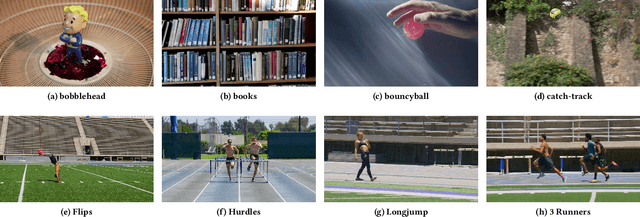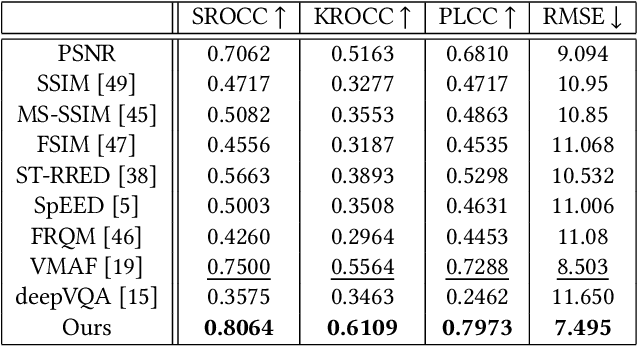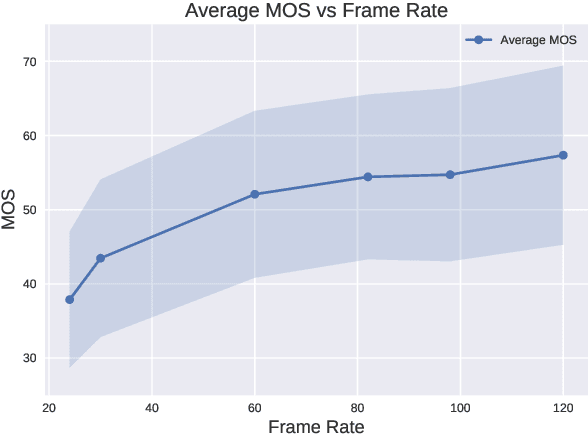Capturing Video Frame Rate Variations through Entropic Differencing
Paper and Code
Jun 19, 2020



High frame rate videos are increasingly getting popular in recent years majorly driven by strong requirements by the entertainment and streaming industries to provide high quality of experiences to consumers. To achieve the best trade-off between the bandwidth requirements and video quality in terms of frame rate adaptation, it is imperative to understand the effects of frame rate on video quality. In this direction, we make two contributions: firstly we design a High Frame Rate (HFR) video database consisting of 480 videos and around 19,000 human quality ratings. We then devise a novel statistical entropic differencing method based on Generalized Gaussian Distribution model in spatial and temporal band-pass domain, which measures the difference in quality between the reference and distorted videos. The proposed design is highly generalizable and can be employed when the reference and distorted sequences have different frame rates, without any need of temporal upsampling. We show through extensive experiments that our model correlates very well with subjective scores in the HFR database and achieves state of the art performance when compared with existing methodologies.
 Add to Chrome
Add to Chrome Add to Firefox
Add to Firefox Add to Edge
Add to Edge